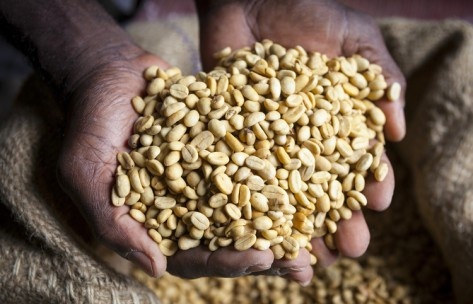Introduction to the characteristics of Costa Rican Coffee Flavor Manor
Costa Rica's terrain is flat on the coast and isolated by rugged mountains in the middle. It declared an exclusive economic zone of 200 nautical miles and a territorial sea of 12 nautical miles. The climate is tropical and subtropical, and partly neotropical. [2]
climate
Costa Rica's climatic conditions are completely different, completely reversing the classification of the four seasons of the year. There are only two seasons here, April to December is the rainy season with much rainfall, and the end of December to April is the dry season, also known as summer. The annual average temperature of the capital San Jose is 15 ° C, the highest is 26 ° C; the temperature in the coastal areas is relatively high, the average night temperature in the Caribbean is 21 ° C, and the average daily temperature is 30 ° C. It is called the Legislative Assembly, unicameral system, called the Barber Assembly, and exercises important powers such as legislative power. Major government decisions need to be approved by the Legislative Assembly. It is called the "first power" of the country. It is the highest legislative body in the country and consists of 57 members. Deputies are elected directly by voters for a term of four years and cannot be re-elected. The current Legislative Assembly was formed in May 2010, and a new Legislative Assembly was elected on 2 February 2014. The results of the elections are as follows: The ruling National Liberation Party (PLN) has 18 seats, the Civil Action Party (RAC) 12 seats, the Liberal Movement Party (PML) 4 seats, the Christian Social Solidarity Party (PUSC) 8 seats, the All Inclusive Party (PASE) 1 seat, the Broad Front Party (FA) 8 seats, the National Renewal Party (RN) 1 seat, the Costa Rican Renewal Party (RC) 1 seat, the Christian Democratic Union (ADC) 1 seat and 2 independent deputies. The current president is Luis Fernando Mendoza Jiménez of the National Liberation Party, elected in May 2013 for a one-year term. On 1 May 2014, the Legislative Assembly completed its transition.
The Supreme Court is the highest judicial body and consists of 22 judges elected for an eight-year term. At the end of the term, if there is no objection from two-thirds of the members of the Parliament, it can be automatically re-elected. There are four courts, the first, second and third courts each composed of five judges, and the fourth court (Constitutional Court) composed of seven judges, which has the final interpretation of the Constitution. The Chancellor of Justice is appointed by the Legislative Assembly for a renewable term of eight years. Zarella Villanueva Monge, President of the Supreme Court, elected in May 2013, is the first female President of the Supreme Court in history. Costa Rica's local courts are divided into three levels: provincial, district and district
Coffee is an important source of income for Costa Rica, introduced in 1808 and cultivated for 200 years. Costa Rica has a third of the population invested
Newly developed villa sarchi species
Newly developed villa sarchi species
Coffee has changed the country, Costa Ricans say, and coffee has made an outstanding contribution to its rich environment. Although Costa Rica ranks third from the bottom in terms of land area in Central America, its economic environment is better than half of that of other countries. Because of its rich people and stable society, Costa Rica has more than 30 national parks.
Coffee was introduced to Costa Rica from Cuba in 1729, and today its coffee industry is one of the most well-organized in the world, producing up to 1700 kilograms per hectare. Costa Rica has a population of 3.5 million, but coffee trees number 400 million, and coffee exports account for 25% of the country's total exports. Costa Rica's volcanic soils are fertile and well drained, especially in the Central Plateau, where the soil consists of successive layers of ash and dust. Costa Rica was thus the first country in Central America to grow coffee and bananas for commercial value. Coffee and bananas are the country's main exports, most notably mountain costa rica coffee, which is mellow and neutral in taste and can be brewed directly or blended with other types of coffee beans.
Other types of Brazilian coffee, such as Rio, Parana, etc., can be produced in large quantities without too much care. Although the taste is rough, it is a kind of inexpensive coffee. Due to its distribution in all parts of the country, the solid quality varies, and there are its own standards (NO.2~NO.8 according to the number of impurities, NO.13~NO.19 according to the size of beans, divided into six grades according to taste). Almost all Arabica varieties are of good quality and stable prices, the most famous being Costa Rica, which has been a necessity for blended coffee since ancient times and is familiar to the public.

Important Notice :
前街咖啡 FrontStreet Coffee has moved to new addredd:
FrontStreet Coffee Address: 315,Donghua East Road,GuangZhou
Tel:020 38364473
- Prev

Balanced and clean Costa Rican Yersalo coffee varieties taste manor boutique coffee bean style
Costa Rican coffee has always been regarded as a perfect type of classic flavor, balanced, clean and mild is his tone. This batch of western valley Yersalo processing plant is famous for its excellent natural geographical conditions and excellent regional planting management techniques. the almost perfect classical flavor, with lively citrus flavor in acid, BlackBerry fruit aroma, acidity and taste thick, melon
- Next

Galapagos coffee producing area Galapagos coffee flavor Galapagos coffee characteristics
In 1875, ManuelJ.Cobos, an indigenous Ecuadorian, began to grow Arabic bourbon coffee trees in the Hasunda Coffee Garden (HaciendaElCafetal) in San Cristobal. Coffee production in the Galapagos Islands: coffee is grown in San Cristobal (SaintCristobal). Inner species of Hasunda Coffee Garden (HaciendaElCafetal) in San Cristobal
Related
- Detailed explanation of Jadeite planting Land in Panamanian Jadeite Manor introduction to the grading system of Jadeite competitive bidding, Red bid, Green bid and Rose Summer
- Story of Coffee planting in Brenka region of Costa Rica Stonehenge Manor anaerobic heavy honey treatment of flavor mouth
- What's on the barrel of Blue Mountain Coffee beans?
- Can American coffee also pull flowers? How to use hot American style to pull out a good-looking pattern?
- Can you make a cold extract with coffee beans? What is the right proportion for cold-extracted coffee formula?
- Indonesian PWN Gold Mandrine Coffee Origin Features Flavor How to Chong? Mandolin coffee is American.
- A brief introduction to the flavor characteristics of Brazilian yellow bourbon coffee beans
- What is the effect of different water quality on the flavor of cold-extracted coffee? What kind of water is best for brewing coffee?
- Why do you think of Rose Summer whenever you mention Panamanian coffee?
- Introduction to the characteristics of authentic blue mountain coffee bean producing areas? What is the CIB Coffee Authority in Jamaica?

